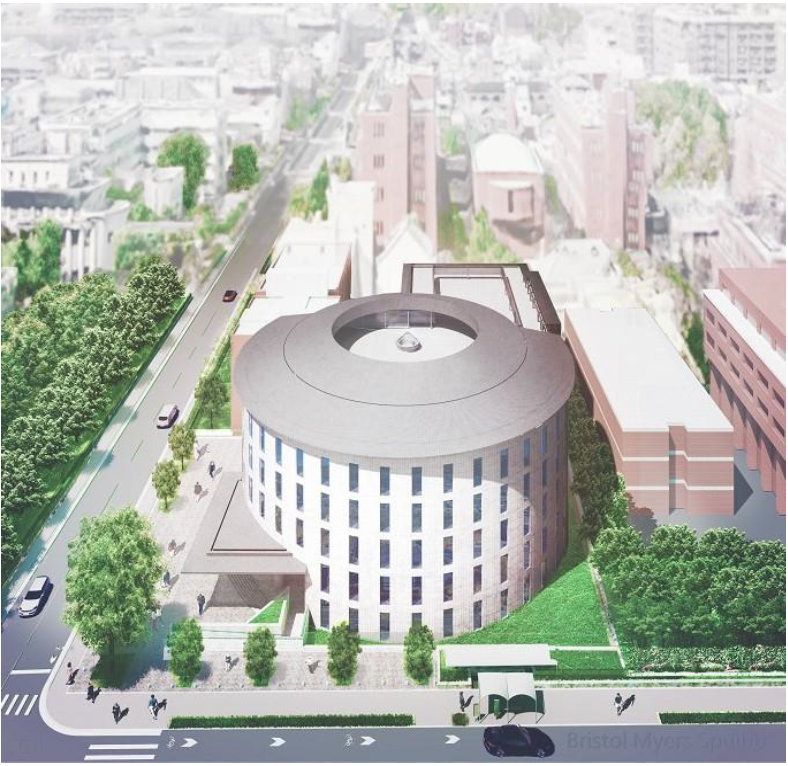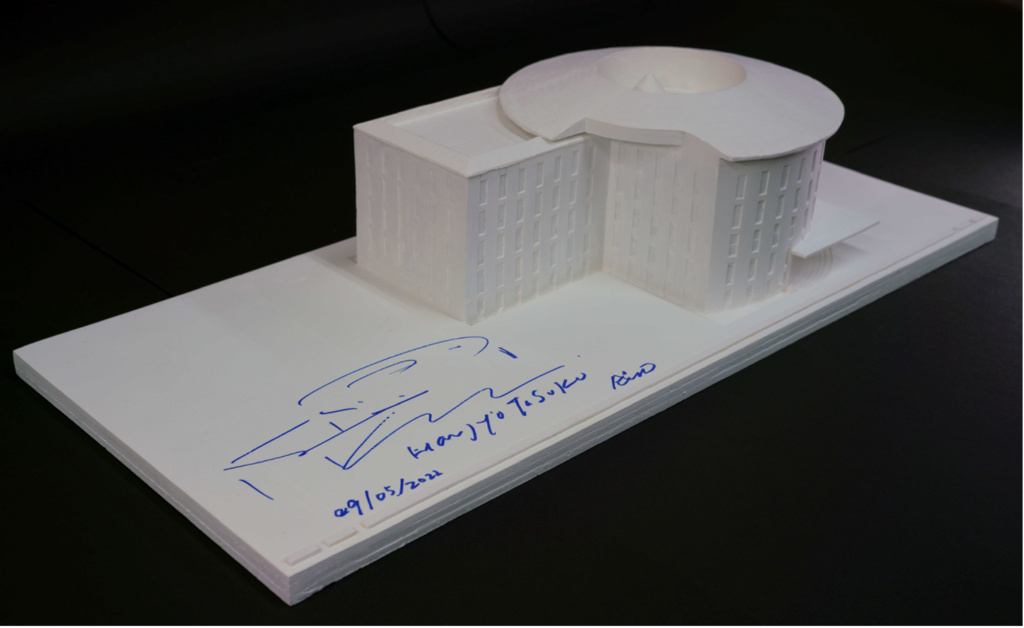We have moved into our brand-new research building, located across the street from Kyoto University Hospital. The official Opening Ceremony of the new building took place on 12th November 2024.
With a total floorspace of 9500 m2 over 5 floors, the new building provides laboratory and office space for up to 300 scientists, research fellows, students, or visitors, with additional room for shared facilities and special instrumentation, including a dedicated animal facility in the basement. The first floor of the building hosts the Nitori Hall, a multi-functional hall for conferences and cultural events, space for exhibitions and educational activities, and a cafeteria.

Industry Sponsorship and Industry Collaborations
Funding for CCII’s new building has been provided through a donation of 5.5 billion (USD 53 million in 2019) from Bristol Myers Squibb, the pharmaceutical company behind the cancer drug Opdivo, the second PD-1/PDL-1 inhibitor approved for treatment. Additional funding for the new facility has been provided by the Japanese Ministry of Education, Culture, Sports, Science and Technology (MEXT) and Kyoto University. To honor the large contribution by Bristol Myers Squibb, the new facility will carry the official name “Bristol Myers Squibb Building at the Center for Cancer Immunotherapy and Immunobiology”.
Close relationships with industry partners will be crucial for CCII’s success. To foster interactions with industry, the new CCII building provides spaces for joint research with partner companies. CCII places special emphasis on industry-academia collaboration, aiming at innovations in cancer treatment.
A Unique Design by Tadao Ando
The architecture of the Bristol Myers Squibb Building at the Center for Cancer Immunotherapy and Immunology is based on an original design by Tadao Ando, one of Japan’s most celebrated contemporary architects known for minimalist designs that emphasize basic forms, structures, and materials.
The circular floor plan of the main tract of the building, as well as the building’s exterior design, and including its color, resembles an immune cell. Its interior provides researchers and technicians both with closed spaces for concentrated work and open or semi-open spaces that encourage communication. The circular part of each of the research floors is a common laboratory space shared by two research groups. The four research floors are directly connected through a spiral staircase at the very center of the building.

Ando to Prof. Tasuku Honjo.
Image: Courtesy of Tadao Ando Architects
